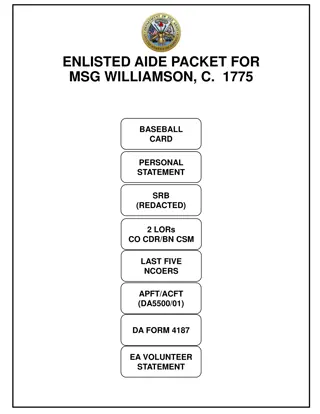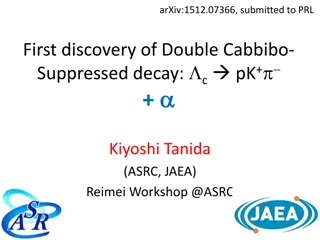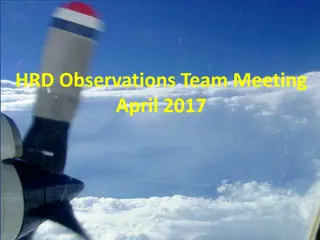
Unraveling the Mysteries of Enceladus and Its Plume
Delve into the evolving understanding of Enceladus and its plume, from pre-Cassini mysteries to Cassini's groundbreaking discoveries. Explore questions on Enceladus' geophysical activity, internal sea habitability, and energy sources, shedding light on the intriguing world of this enigmatic moon of Saturn.
Uploaded on | 0 Views
Download Presentation

Please find below an Image/Link to download the presentation.
The content on the website is provided AS IS for your information and personal use only. It may not be sold, licensed, or shared on other websites without obtaining consent from the author. If you encounter any issues during the download, it is possible that the publisher has removed the file from their server.
You are allowed to download the files provided on this website for personal or commercial use, subject to the condition that they are used lawfully. All files are the property of their respective owners.
The content on the website is provided AS IS for your information and personal use only. It may not be sold, licensed, or shared on other websites without obtaining consent from the author.
E N D
Presentation Transcript
Our Evolving Understanding of Enceladus and its Plume and a few loose ends C. J. Hansen 25 April 2017
Evolving Questions Pre-Cassini mysteries The plume discovery What is going on inside What is driving the activity Is Enceladus internal sea habitable The biggest question of all
Pre-Cassini Mysteries Enceladus was an important target for Cassini: The E ring coincides with the orbit of Enceladus We speculated, could Enceladus be the source of the E ring? Voyager left us wondering - Why does Enceladus have such youthful geology? Hypothesis: Eruptive activity on Enceladus is the source of the E ring Although we didn t know Enceladus role, we asked: Where is all the OH in Saturn s system coming from? Best VGR PIA01950
Cassini discovered: Enceladus is Geophysically Active 2005 Close Enceladus Flybys February - The discovery of Enceladus plume influencing its environment July South polar hotspot, locally-confined water vapor moving away at escape velocity, ice particles
Tiger Stripe Fissures and Ice Particle Jets Alexandria, Cairo, Baghdad, and Damascus Water vapor and ice particles come from four fissures across the south pole
Questions answered? Check, check, check Is Enceladus the source of the E ring? YES Why is Enceladus surface geology so young? It is a geologically active body Bonus Question: Where is the O and OH in the system coming from? The dissociation of the water molecules coming from Enceladus Science Special Issue 311 (2006)
But that led to more Questions After the plume discovery, we asked about The source Where is the gas coming from? Where are the particles coming from? Is there a body of liquid water inside Enceladus? The location Why is the activity at the south pole and not the equator or also the north pole? The energy Where is all this energy coming from? Is it tidal?
Where is the water coming from? It quickly became obvious that the particles and gas were coming from the tiger stripe fissures Localized heat [left], plume boundary Particle jets coming from the tiger stripes and discovery of collimated gas jets [right]
The Source Hypotheses What is the source of the water vapor and ice particles? Clathrate Reservoir Hypothesis Fractures cause degassing of a clathrate reservoir Frigid Faithful Fractures with melt entrain clathrates, then gas exsolves Frothy Faithful Cosmic ray proton and magnetospheric electron bombardment production of surface oxidants which then cycle subsurface to react exothermically and then drive ice sublimation A liquid water reservoir Low pressure, boiling Cold Faithful Localized heating vaporizes water Shear stresses Normal stresses A pressurized sub-surface ocean Clathrate Hypothesis Jumping to the answer H => hydrate, G+I => gas + ice
The Source Revealed Answers: Yes, there is a liquid body of water under the south pole And it is global Near the south pole it extends almost to the surface
Why is the plume source sea at the south pole? What is the geologic / tectonic history of Enceladus? With a localized sea at the south pole A density / gravity anomaly could cause re-orientation of Enceladus to put hot spot at south pole OR other ideas: Heterogeneous interior with low viscosity zone? Was there a large impact?
Why the localized heat at the south pole? Why not the north pole? If the energy source is tidal shouldn t we see plumes on both poles? But we don t What is the geological history of the north polar region? Why does it look so different? What is the tectonic history of Enceladus?
Energy Source What is going on inside Enceladus / what is driving the plume activity? In 2006 we were looking for a source for ~6 GW of energy to provide the heat emanating from the south polar region Is it a manifestation of tidal energy? Initial answer was no, equilibrium tidal heating = 0.12 GW, or, even considering past resonances, still < 1 GW Where else could all the heat be coming from? Radiogenic heating today from a core is only ~0.1 GW Early short-lived heating from decay of 26Al and 60Fe could have melted interior, then liquid maintained by tidal heating Liquid state maintained by presence of NH3 antifreeze Libration
Energy Tidal energy validated Tidal energy will vary depending on where Enceladus is in its orbit (how close or far Enceladus is from Saturn) other sources of energy don t behave that way VIMS and ISS data show particle flux that is a function of Enceladus orbital longitude But there still is a question of how it works
Tidal Energy Models Normal stress model predicts tidally- controlled differences in eruption activity depending on where Enceladus is in its eccentric orbit Expect fissures to open and close (inconsistent with UVIS data) Shear stress model also predicts tidally-controlled differences in eruption activity as a function of where Enceladus is in its eccentric orbit Expect strike-slip faulting A later model combines the two and requires that conditions for shear failure be met for movement to occur Careful analysis of years of images of the ice jets shows that the most likely culprit is normal stress but fractures do not open and close all the way
The Plumbing We now know there are ~100 ice jets Coming from openings just 9m wide Hot spots discretely spaced along the tiger stripes Supersonic gas jets with velocity > mach 6
What is happening below the surface? We can only see the products must model what is below the surface What is different at apokrone? Nozzle structure? Temperature? Dissolved gas? Heat conduction through ductile ice Slots sloshing, water can t freeze Perrier ocean gas coming out of solution
Temporal Variability What is the long-term variability of Enceladus geologic activity? Is it controlled by the ~decadal eccentricity cycle? Are there giant outbursts that toss out large blocks of ice? Occasional large puffs? Oxygen in the system on approach INMS water vapor measurement at E5
The Inside of Enceladus on the Outside Plume Composition & Plume Fallout What is the composition of the plume? Mostly everything is water, but the minor constituents are very interesting! CDA: Salty NaCl, NaHCO3, Na2CO3 particles Small salt-poor grains in the E ring, salt-rich particles in Enceladus diffuse plume VIMS: CO2 ice INMS: Organics
The Inside of Enceladus on the Outside Plume Composition & Plume Fallout Some plume particles are propelled to escape velocity and form the E ring Most fall back to the surface in a distinctive, detectable pattern in color maps VIMS detects CO2 ice concentrated in the south polar region IR3-G-UV3 at phase 10 - 40
The Inside of Enceladus on the Outside Plume Composition Vapor Composition UVIS: primarily water Also C2H4 (solving the 28 amu mystery) INMS: >90% H2O Trace species include: ~1% each CO2 NH3 CH4 C2 group < 0.5% C3 group < 0.01% New INMS result: H2
Is Enceladus Internal Salty Sea Habitable? Habitability wish list: Liquid water - check Organics - check Are there hydrothermal vents at the bottom of Enceladus sea? These could supply minerals and other nutrients What is the geochemistry of the water? What is the pH? Does serpentinization provide H2, chemical energy life could take advantage of?
Are there hydrothermal vents? Hydrothermal activity occurs when seawater infiltrates and reacts with a rocky core, emerging as a heated, mineral-laden liquid Silica nanoparticles were captured by Cassini s cosmic dust analyzer. Analysis revealed these particles came from Enceladus seafloor Laboratory experiments indicate that these dust particles must have formed on the seafloor at temperatures above 90 C (194 F). This is a much hotter environment than scientists thought existed inside the icy moon, suggesting that seafloor hydrothermal activity is occurring There is a strong possibility that hot water rises from seafloor vents on Enceladus. This raises the potential for habitable environments beneath the ice crust of this small, active moon. This result shows that Enceladus plume activity is an eruptive process that begins in its core and is not limited to the near-surface The new finding opens the possibility for prebiotic or even biotic chemical mixtures to slow- cook inside Saturn s moon Enceladus, where the ocean meets hot rock Similar activity is observed around mid-Atlantic seafloor vents, where some extreme life forms reside
Are there hydrothermal vents (cont.)? The presence of methane in the plume provides evidence of active seafloor hydrothermal vents, where seawater and the rocky core meet to form warm mineral-laden liquid Ocean models show that methane molecules will be trapped in ice cages , called clathrates. So methane should not be abundant in the plumes unless some source is rapidly adding methane in the ocean, faster than it is trapped into clathrates. Chemical reactions near warm hydrothermal vents are the most likely candidate for producing additional methane.
Is Enceladus Internal Salty Sea Habitable? Habitability wish list Liquid water - check Organics - check Are there hydrothermal vents at the bottom of Enceladus sea? These could supply minerals and other nutrients Very likely, based on CDA detection of silica nano-particles What is the geochemistry of the water? What is the pH? 8-10 (CDA); 11-12 (Glein et al., 2015) Methane in plume is not in equilibrium H2 in plume provides evidence for water-rock interaction Does the water-rock interaction provide H2, chemical energy that life could take advantage of? H2 has been detected, favoring production of CH4 from CO2: CO2(aq) + 4H2(aq) -> CH4(aq) + 2H2O Enough yes sto ask
The Biggest Question of All Is there life inside Enceladus? We need to sample the plume (with the right set of instruments)






















